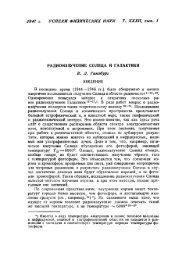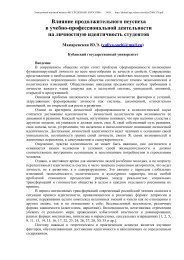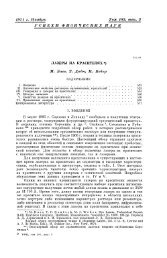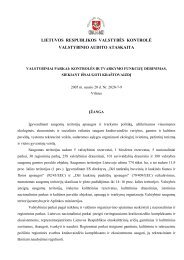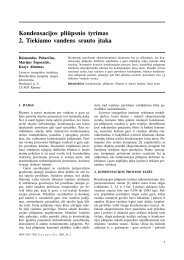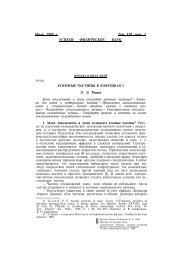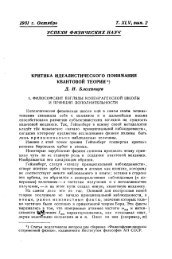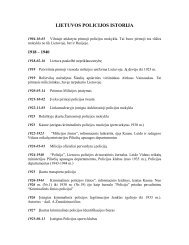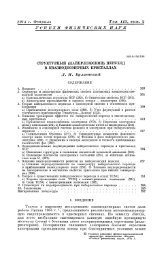University of Groningen Groningen Growth and Development Centre ...
University of Groningen Groningen Growth and Development Centre ...
University of Groningen Groningen Growth and Development Centre ...
You also want an ePaper? Increase the reach of your titles
YUMPU automatically turns print PDFs into web optimized ePapers that Google loves.
<strong>and</strong> in particular in the 1990s, both countries completely changed their policies: they privatised most<br />
state enterprises, eliminated subsidies, <strong>and</strong> opened their borders for foreign products. Important acts<br />
in terms <strong>of</strong> regional integration are the memberships <strong>of</strong> Mexico to NAFTA <strong>and</strong> Brazil to Mercosur.<br />
Figures 1 <strong>and</strong> 2 show some key characteristics <strong>of</strong> manufacturing in each country. Figure 1 shows the<br />
composition <strong>of</strong> manufacturing value added by industry in Brazil, Mexico <strong>and</strong> United States from<br />
1970-99. The composition <strong>of</strong> value added is relatively stable in the USA. In contrast, in Brazil <strong>and</strong><br />
Mexico important changes took place: the share <strong>of</strong> transport equipment increased mostly at the<br />
expense <strong>of</strong> the shares <strong>of</strong> textiles <strong>and</strong> chemicals. Throughout the period the USA had smaller shares <strong>of</strong><br />
food products <strong>and</strong> textiles, <strong>and</strong> a larger share <strong>of</strong> machinery relative to Brazil <strong>and</strong> the USA.<br />
The main trends in output, employment <strong>and</strong> productivity growth in manufacturing in the 1970s<br />
to 1990s are shown in Figure 2. Brazil <strong>and</strong> Mexico show very different trends compared to the USA,<br />
in particular in terms <strong>of</strong> employment growth. During the entire 1970-99 period, the US experienced<br />
positive output <strong>and</strong> labour productivity growth, even though these rates were relatively low in the<br />
1970s. Productivity growth accelerated in the second half <strong>of</strong> the 1990s, in particular in machinery. 2<br />
In contrast, Brazil <strong>and</strong> Mexico lived periods <strong>of</strong> up <strong>and</strong> downturns in employment <strong>and</strong> output growth.<br />
Value added grew at relatively high rates in the 1970s <strong>and</strong> the 1990s. In the second half <strong>of</strong> the 1990s,<br />
Mexico benefited from a increased dem<strong>and</strong> from the USA which boosted its output growth. The most<br />
important downturns in output growth were during the debt-crisis <strong>of</strong> the 1980s, in particular in Brazil.<br />
Both countries show very different trends in employment growth. In Brazil, employment grew in the<br />
1970s <strong>and</strong> between 1983 <strong>and</strong> 1989 <strong>and</strong> fell around 1980 <strong>and</strong> in the 1990s. In Mexic o, employment<br />
growth was relatively constant over time, with a deceleration in the first half <strong>of</strong> the 1980s <strong>and</strong><br />
acceleration in the second half <strong>of</strong> the 1990s.<br />
As Figure 2 illustrates, labour productivity growth was slightly higher in Mexican compared to<br />
Brazilian manufacturing, except for food <strong>and</strong> transport equipment in which Brazil outperformed<br />
Mexico. Both Latin countries showed significantly lower productivity growth than the USA. In<br />
addition to growth rates, we should also take into account productivity levels. Some countries may<br />
register high growth rates because they have low levels <strong>of</strong> productivity which allows them to benefit<br />
from the large catch-up potential or productivity gap. This paper aims to check whether a link exists<br />
between the growth rates <strong>and</strong> levels <strong>of</strong> productivity.<br />
2 The spectacular productivity growth <strong>of</strong> this branch originates almost exclusively from the computer hardware<br />
branch, which volume <strong>of</strong> production exploded due to rapid price declines. Employment remained almost<br />
constant throughout the period, except for textiles <strong>and</strong> clothing which experienced a substantial decline.<br />
2




